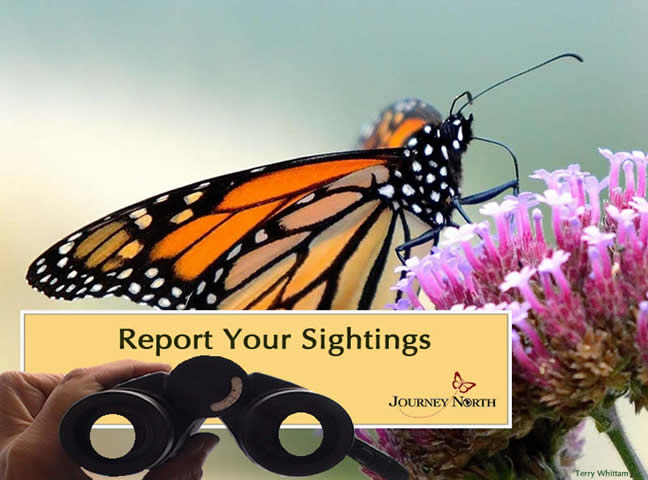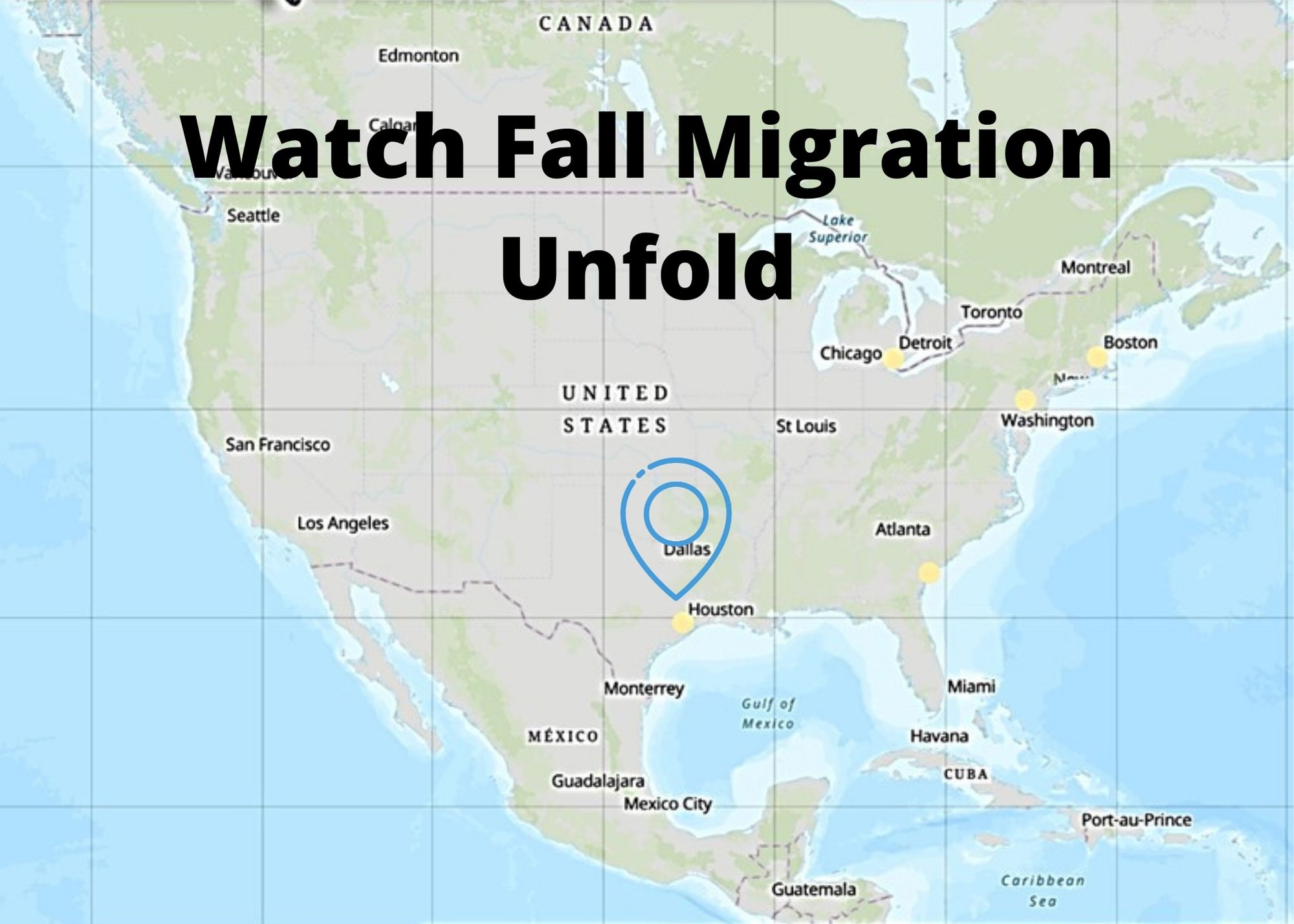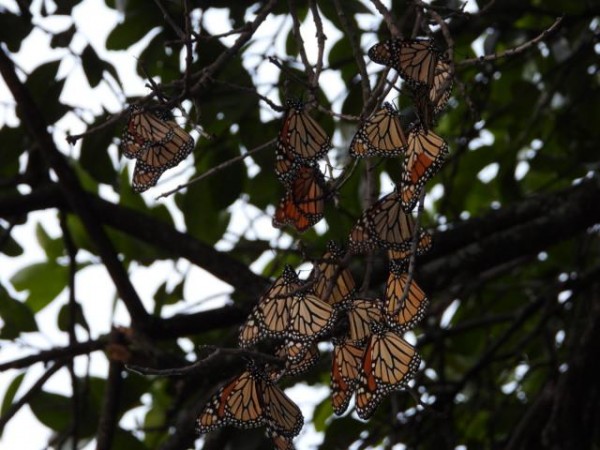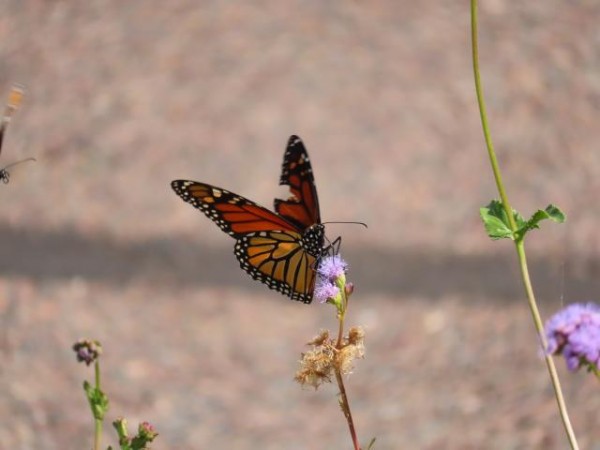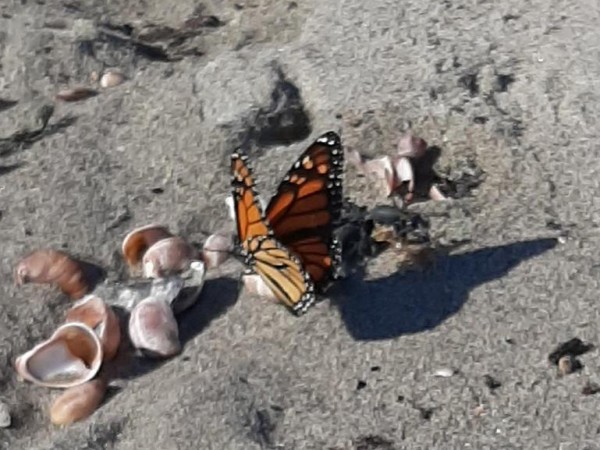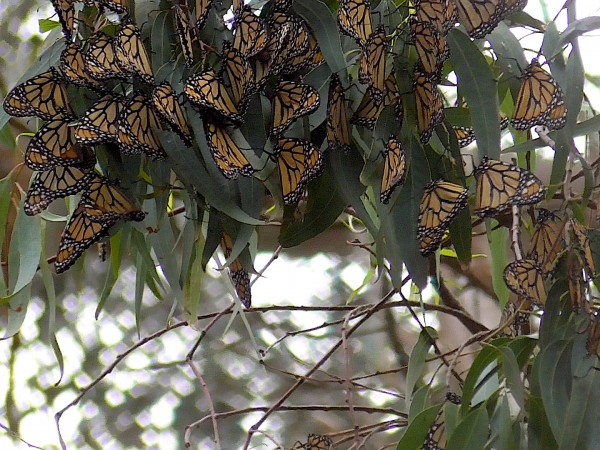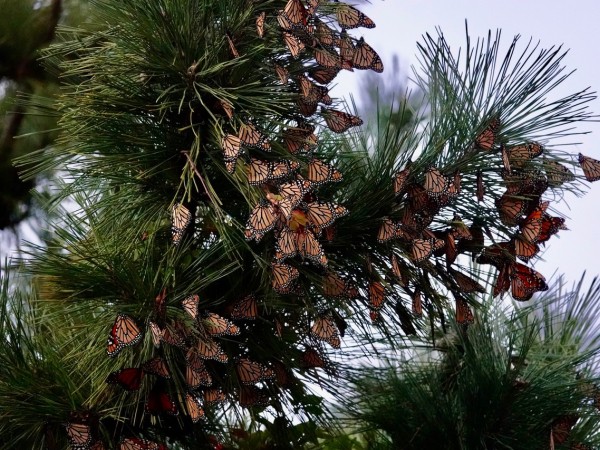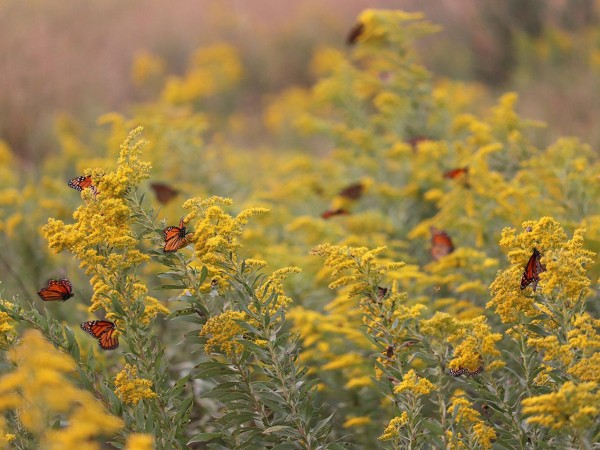Closer to Overwintering Grounds
The Leading Edge of Migration
Monarchs are moving through Mexico as reports continue to come in from Coahuila and Nuevo León and are starting to pop up farther south in Tamaulipas. According to Correo Real, peak migration has been occurring for a week in northeast Mexico.
Elsa in Monterrey, NLE: "This morning around 8:00 am we counted around 100 monarchs perched in various trees (pine, ash and sabino). The nearby nectar sources are mainly bougainvilleas, some small urban gardens, and wild flowers on the surrounding hills." (10/23/2021)
Valentina in Victoria, TAM: "They come to the same tree every year. Less so far, I will keep checking next week." (10/24/2021)
Out West, more monarchs are on their way to overwintering grounds along coastal California and sightings are steady in the Southwest.
Effie in Grover Beach, CA: "Adult Monarch flying West across Hwy 1, just south of the Pismo Beach Monarch Butterfly Grove." (10/22/2021)
Della in Phoenix, AZ: "Today Friday the 22nd at 1pm I saw a female Monarch feeding on an Ageratum plant in my front yard . . . It is missing a part of its wing, but otherwise colors look bright." (10/22/2021)
Letter From Estela Romero: Awaiting Arrivals
In her first report of the season, Estela Romero details how communities surrounding the Monarch Biosphere Reserve eagerly await the monarchs' return and Day of the Dead (Día de los Muertos) celebrations. She also highlights a concerning discovery at the Reserve earlier in the year. Estela writes, "After a long journey south this fall, monarch butterflies are about to reach their overwintering home in the Oyamel forests of central México . . . Meanwhile, on November 1 and 2, we begin our celebrations for The Day of the Dead . . . Ejidatario community members, assisted by the corresponding state specialists, determined that screwworms were infecting trees."
Read more of Estela Romero’s Letter: Awaiting Arrivals (English Version)
Leer más de la carta de Estela Romero: Esperando Llegadas (Versión en español)
(For more information about the screwworm infestation in Michoacán, explore articles from La Jornada and Aristegui Noticias.)
Eastern Monarch Population
Eastern Monarch Fall 2021 Report #7
From New Hampshire to Alabama, peak activity was widely reported along the Eastern Flyway. Along the Central Flyway, reports picked up in Mexico as the effects of Hurricane Pamela waned and allowed monarchs to make progress south. And monarchs were still reported as far north as southern Ontario.
Read more of the Eastern Monarch Fall 2021 Report #7»
Western Monarch Population
Letter from Gail Morris: Western Monarch Fall 2021 Report #7
Out West, Gail Morris shares good news of growing monarch numbers at overwintering sites in California. Gail writes, "Excitement is in the air as monarch numbers grow at the California overwintering sites! Monarchs in Arizona, California and New Mexico continue to increase as they hurry on their way. Many observers report the largest numbers of monarchs seen in the last few years, an exciting grand finale giving renewed hope of an increased overwintering population."
Read more of Gail Morris' Letter: Western Monarch Fall 2021 Report #7»
Highlights From Cape May
Situated along the shores of the Atlantic Ocean, the New Jersey (NJ) Audubon Cape May Bird Observatory provides an ideal location for bird and butterfly watching, especially during fall migration. Mark Garland, Director of the Observatory’s Monarch Monitoring Project, and Paige Cunningham, Cape May Monarch Monitoring Project volunteer, provided updates on migration happenings at Cape May.
Read more: Highlights From New Jersey Audubon Cape May Bird Observatory»
Keep Reporting
If you’re still observing monarch activity, keep reporting! Your observations are so valuable for our collective understanding of monarch migration. Thanks for all you do.


